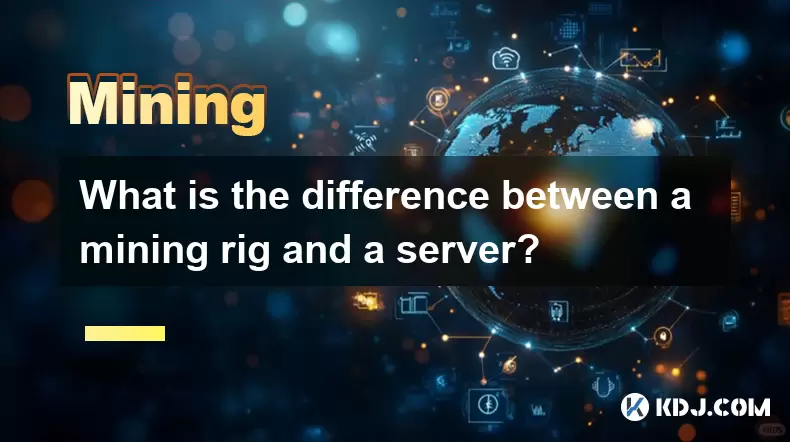-
 Bitcoin
Bitcoin $119,448.2396
0.27% -
 Ethereum
Ethereum $2,992.9919
0.78% -
 XRP
XRP $2.9074
1.58% -
 Tether USDt
Tether USDt $1.0001
0.00% -
 BNB
BNB $687.9097
-0.40% -
 Solana
Solana $161.5804
-0.47% -
 USDC
USDC $0.9998
0.01% -
 Dogecoin
Dogecoin $0.1948
-2.10% -
 TRON
TRON $0.3013
-0.08% -
 Cardano
Cardano $0.7286
-3.16% -
 Hyperliquid
Hyperliquid $47.3153
-3.81% -
 Stellar
Stellar $0.4543
-9.79% -
 Sui
Sui $3.8809
5.63% -
 Chainlink
Chainlink $15.6262
-0.55% -
 Hedera
Hedera $0.2368
-5.31% -
 Bitcoin Cash
Bitcoin Cash $501.2030
-0.80% -
 Avalanche
Avalanche $21.0650
-1.43% -
 UNUS SED LEO
UNUS SED LEO $9.0006
-0.39% -
 Shiba Inu
Shiba Inu $0.0...01310
-1.90% -
 Toncoin
Toncoin $3.0040
1.56% -
 Litecoin
Litecoin $93.8936
-1.20% -
 Monero
Monero $341.8918
1.27% -
 Polkadot
Polkadot $3.9087
-3.05% -
 Uniswap
Uniswap $8.9599
4.78% -
 Dai
Dai $0.9999
0.02% -
 Ethena USDe
Ethena USDe $1.0005
-0.02% -
 Bitget Token
Bitget Token $4.3954
-0.14% -
 Pepe
Pepe $0.0...01207
-2.26% -
 Aave
Aave $314.5223
1.72% -
 Bittensor
Bittensor $408.6988
2.76%
What is the difference between a mining rig and a server?
A mining rig is built for cryptocurrency mining with high-performance GPUs or ASICs, while a server provides network services with a focus on reliability and data management.
Jul 15, 2025 at 01:50 pm

Understanding the Core Definitions
In the realm of computing and cryptocurrency, two terms that often come up are mining rig and server. While both involve computer hardware, their purposes, configurations, and operations differ significantly. A mining rig is a specialized computer system designed specifically for mining cryptocurrencies such as Bitcoin, Ethereum, or Litecoin. It typically consists of multiple high-performance graphics processing units (GPUs) or application-specific integrated circuits (ASICs) to solve complex mathematical problems required for block validation.
On the other hand, a server is a general-purpose machine that provides services over a network. Servers can host websites, manage databases, run enterprise applications, or handle communication protocols. They are built for stability, uptime, and efficient data handling rather than raw computational power.
Hardware Composition and Design Philosophy
The hardware configuration of a mining rig is optimized for parallel processing and energy efficiency when performing hashing algorithms. Most rigs use multiple GPUs because they offer better hash rates compared to CPUs. Some advanced setups use ASIC miners, which are custom-built chips designed for specific cryptographic algorithms like SHA-256 used by Bitcoin.
Servers, in contrast, prioritize reliability, redundancy, and multi-threaded performance. They often include features such as ECC memory, RAID arrays, dual power supplies, and enterprise-grade processors with support for virtualization. These components ensure minimal downtime and data integrity, which is crucial for hosting critical applications or services.
Primary Functionality and Use Cases
A mining rig's sole purpose is to validate transactions and secure a blockchain network by solving cryptographic puzzles. This process generates new coins as a reward for miners. The more computational power a rig has, the higher its chances of earning rewards. Mining rigs are usually operated in environments where electricity costs are low, and cooling systems are essential due to the heat generated during operation.
Servers, however, serve a variety of functions depending on their deployment. They can be web servers, database servers, email servers, or even blockchain nodes. Unlike mining rigs, servers are not focused on generating cryptocurrency but instead on providing consistent and reliable access to data and services across a network.
Energy Consumption and Efficiency Considerations
One of the most significant differences between these two types of machines lies in their energy consumption patterns. Mining rigs consume large amounts of electricity due to the continuous and intensive computational work required for mining. Miners often look for locations with cheap electricity to maximize profitability.
Servers, while also consuming considerable power, are designed with energy efficiency in mind, especially in data centers where cooling, load balancing, and resource allocation are tightly managed. Modern servers often support power-saving modes, dynamic frequency scaling, and virtualization technologies to optimize performance per watt.
Physical Setup and Deployment Environments
Mining rigs are often custom-built using consumer-grade components, sometimes housed in open-air frames to allow better airflow and easier access for maintenance. They are commonly found in dedicated mining farms, basements, or warehouses with good ventilation and power infrastructure.
Servers, particularly those used in enterprise settings, are usually standardized rack-mount units designed to fit into data center racks. They are equipped with remote management tools, redundant components, and often operate within climate-controlled environments to ensure optimal performance and longevity.
Maintenance and Upgradability Aspects
Maintaining a mining rig involves regular monitoring of temperatures, fan speeds, power draw, and software updates. Since mining is a highly competitive field, upgrading hardware is common to stay profitable. Many miners frequently swap out GPUs or ASICs to adapt to changes in difficulty levels or coin values.
Servers, especially in production environments, require minimal physical intervention once set up. Their maintenance is more about software updates, backups, security patches, and ensuring service continuity. Hardware upgrades are less frequent and usually planned to avoid service disruption.
Frequently Asked Questions
- Can a server be used for mining?
Technically, yes, but it’s not ideal. Servers are optimized for reliability and multitasking rather than the single-minded computational workload required for mining. They lack the GPU-heavy architecture necessary for efficient mining.
Is it possible to repurpose a mining rig as a server?
Possible, but again, not recommended. Mining rigs are built for maximum hashing power and may lack features like ECC memory, RAID controllers, or sufficient storage capacity needed for running server applications smoothly. Which one consumes more electricity: a mining rig or a server?
A mining rig generally consumes more power under full load due to the intense GPU or ASIC computations. However, enterprise servers can also draw significant power when running at full capacity, especially in large data centers. Do I need a dedicated internet connection for a mining rig or server?
Both require stable internet connectivity. Mining rigs need constant synchronization with the blockchain network, while servers must maintain uptime for hosted services. However, servers often have more stringent requirements for latency and bandwidth consistency. Disclaimer:info@kdj.com
The information provided is not trading advice. kdj.com does not assume any responsibility for any investments made based on the information provided in this article. Cryptocurrencies are highly volatile and it is highly recommended that you invest with caution after thorough research!
If you believe that the content used on this website infringes your copyright, please contact us immediately (info@kdj.com) and we will delete it promptly.
- Yukon Handgames: Carcross First Nation's Cultural Renaissance
- 2025-07-15 16:50:12
- Dogecoin's Key Zone: Will DOGE Break Out?
- 2025-07-15 18:10:12
- Strategy's Bitcoin Bonanza: 600,000 BTC and Beyond!
- 2025-07-15 16:30:12
- Whale Wallets Pounce on PUMP Token Dip: Smart Money Moves?
- 2025-07-15 18:10:12
- SEI Token's Wild Ride: Price Jump and the Looming Unlock Event
- 2025-07-15 18:15:11
- Blockchain, Bitcoin, and Treasury Strategy: A New Era of Finance
- 2025-07-15 17:00:12
Related knowledge

How are crypto mining profits taxed?
Jul 14,2025 at 12:28am
Understanding Cryptocurrency Mining and TaxationCryptocurrency mining involves validating transactions on a blockchain network and earning rewards in ...

How to keep a mining rig cool
Jul 12,2025 at 01:42pm
Understanding the Importance of Cooling in Mining RigsCryptocurrency mining is an intensive process that places heavy demand on hardware components, p...

How much does it cost to start crypto mining?
Jul 13,2025 at 12:22am
Understanding the Basic Costs of Crypto MiningStarting crypto mining involves several upfront and ongoing expenses. The primary costs include hardware...

What is the most profitable crypto to mine?
Jul 13,2025 at 07:00am
Understanding Mining Profitability in CryptocurrencyWhen evaluating the most profitable crypto to mine, it's essential to consider several factors tha...

What do I need to start mining crypto?
Jul 13,2025 at 12:28am
Understanding the Basics of Crypto MiningCrypto mining is the process by which transactions are verified and added to a blockchain, and new coins are ...

How does crypto mining work?
Jul 13,2025 at 11:01am
Understanding the Basics of Crypto MiningCrypto mining is the process through which new cryptocurrency coins are introduced into circulation and trans...

How are crypto mining profits taxed?
Jul 14,2025 at 12:28am
Understanding Cryptocurrency Mining and TaxationCryptocurrency mining involves validating transactions on a blockchain network and earning rewards in ...

How to keep a mining rig cool
Jul 12,2025 at 01:42pm
Understanding the Importance of Cooling in Mining RigsCryptocurrency mining is an intensive process that places heavy demand on hardware components, p...

How much does it cost to start crypto mining?
Jul 13,2025 at 12:22am
Understanding the Basic Costs of Crypto MiningStarting crypto mining involves several upfront and ongoing expenses. The primary costs include hardware...

What is the most profitable crypto to mine?
Jul 13,2025 at 07:00am
Understanding Mining Profitability in CryptocurrencyWhen evaluating the most profitable crypto to mine, it's essential to consider several factors tha...

What do I need to start mining crypto?
Jul 13,2025 at 12:28am
Understanding the Basics of Crypto MiningCrypto mining is the process by which transactions are verified and added to a blockchain, and new coins are ...

How does crypto mining work?
Jul 13,2025 at 11:01am
Understanding the Basics of Crypto MiningCrypto mining is the process through which new cryptocurrency coins are introduced into circulation and trans...
See all articles

























































































